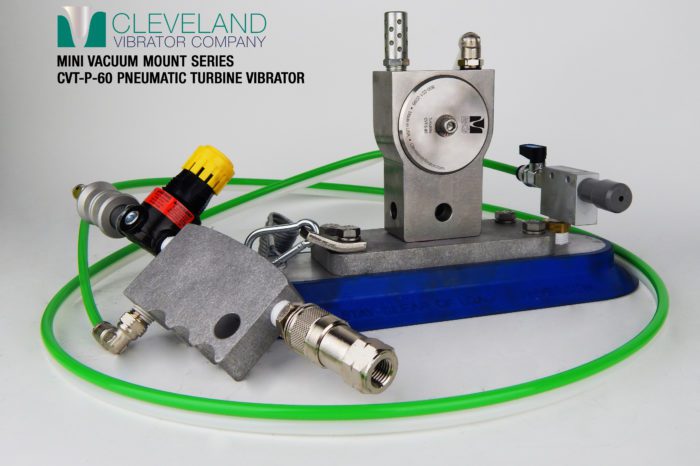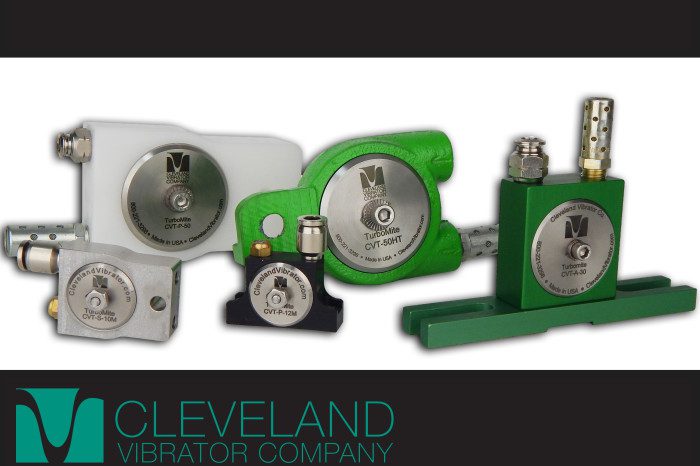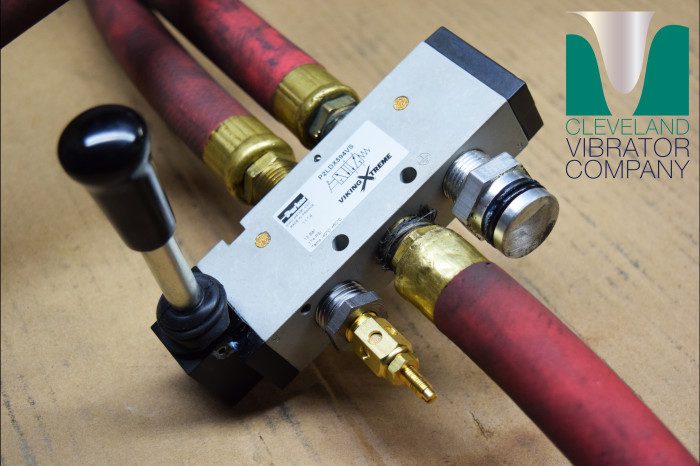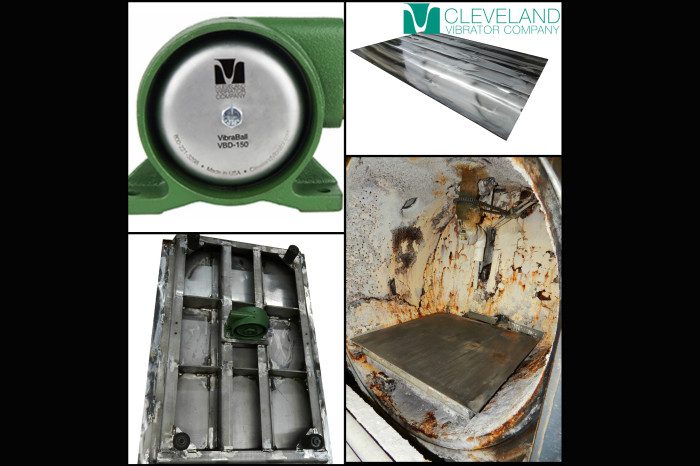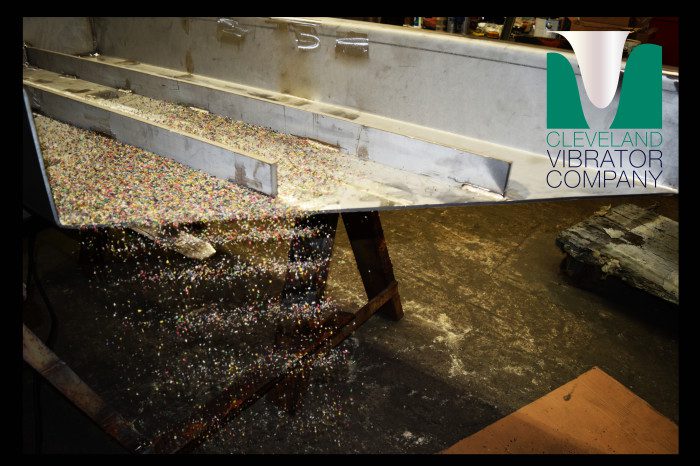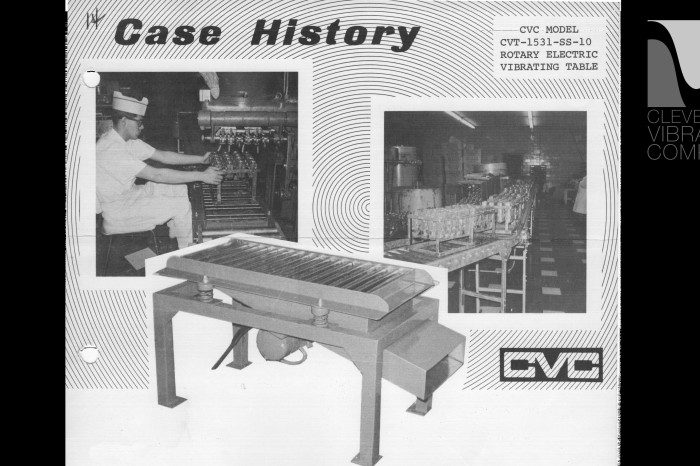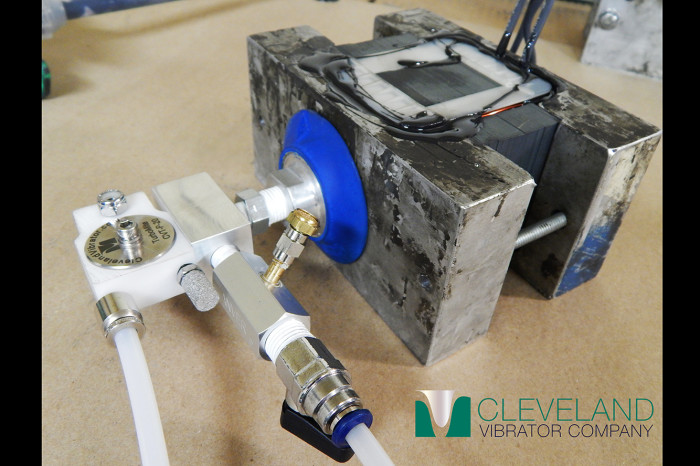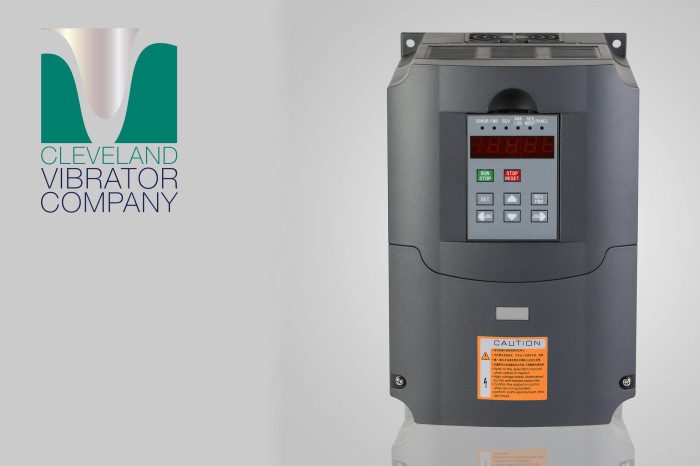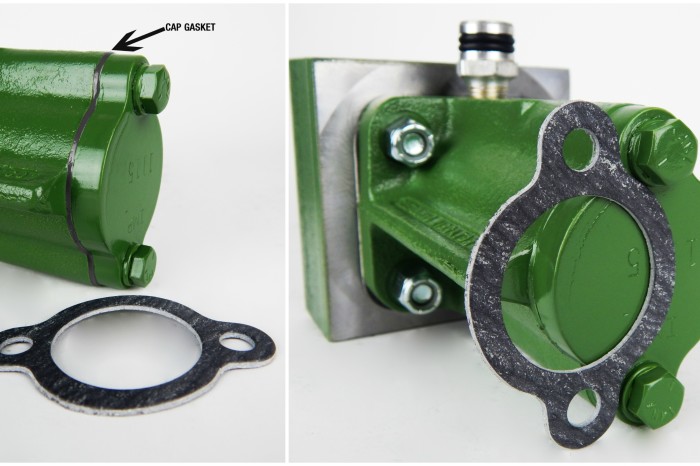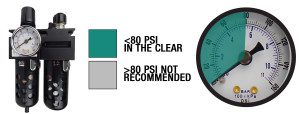The Cleveland Vibrator Company has been manufacturing pneumatic piston vibrators since 1923. During that time, there have been a wide range of new products developed and released as the industries change. A great recent example of this innovation is the Vacuum Mount Vibrator Series.
The first generation of the Vacuum Mount family was designed around the flagship product, air piston vibrators, to accommodate a wide range of applications and mounting locations. The air piston vibrators that are used are the VMSAC models, these are the non-impacting or air-cushioned piston vibrators. The reason for the non-impacting model is because the impacting model’s steel piston inside the ductile iron casted body provides a large amount of force that actually breaks the suction of the vacuum cup when installed on a bin, hopper trailer, dump bed truck, slip form or other application.
After the success of the first generation, with the VMSAC models, we expanded into the pneumatic turbine vibrators. This has allows us to provide many more options and sizes to help meet the demands of the user’s application. The original family within the product line contained four models (1125 VMSAC, Read More…
Share this blog post:


